The process of plastic injection molding can produce the perfect parts for your needs quickly and cost effectively. However, as with any manufacturing process, there are certain “gotchas” that can cause less than optimal results. Below are five design guidelines you should follow to help ensure that your production runs deliver an outstanding finished product.
5 Design Tips for Problem-Free Plastic Injection Molding
Posted: September 30, 2016 by
Jon Gelston
Tags:
Plastic Injection Molding,
Plastic Injection Molding Defects
What Type of Plastic Should You Choose? Here are the Questions You Should be Asking.
Posted: August 23, 2016 by
Jon Gelston
Tags:
Plastic Types
One of the most important decisions you make with each new plastic injection molding project you undertake is determining what type of plastic to use. The physical characteristics of plastic run the gamut from highly pliable to extremely rigid, clear to opaque, easily reused/recycled or non-recyclable. Naturally, resin cost and availability can influence your selection as well.
3 Common Plastic Part Defects and How to Avoid Them
Posted: July 20, 2016 by
Jon Gelston
Tags:
Plastic Injection Molding Defects
When you watch a plastic injection molding production run and see mass quantities of perfect plastic parts being produced, it’s easy to believe that the process is almost effortless. The truth is, however, there are many, many factors that go into producing that perfect part, and if any of these factors are off by even a fraction, defective parts can result.
Advantages of Project-Specific Sourcing for Plastic Injection Tooling
Posted: June 20, 2016 by
Jon Gelston
Tags:
Plastic Injection Molding,
Plastic Injection Molding Tooling
The concept of the one-stop shop as it applies to plastic injection molding goes back many decades. Historically, injection molders sought to deliver more value to their customers by handling every aspect of a project in-house, beginning with designing and developing molds.
Plastic Injection Molding: Gate Basics
Posted: June 7, 2016 by
Jon Gelston
Tags:
Plastic Injection Molding,
Plastic Gate Design
In plastic injection molding, one of the most important aspects of the mold design is how and where it is gated. The “gate” is the opening in a mold through which the molten plastic is injected into the final part. It is the boundary between part and scrap. The location, size, and shape of the gate can have a significant effect on everything from the structural integrity to the visual appearance of a finished piece.
The Benefits of Elastomeric Overmolding
Posted: May 18, 2016 by
Jon Gelston
Tags:
elastomeric overmolding
Elastomeric overmolding (sometimes called “elastomer overmolding” or just “overmolding”) is a process in which a softer layer of material is bonded to a harder functional or structural component of a part. It can be used to improve functionality, to change the look of a part, or both. An example that most people are familiar with is a toothbrush handle with a soft, grippable section or covering. Other examples of overmolded parts include:
Don’t Be Fooled: Thicker Isn’t Always Stronger
Posted: May 10, 2016 by
Jon Gelston
Tags:
Plastic Injection Molding
It would make sense that the thicker the walls of a part are, the stronger it is. However, that’s not always the case. That statement is based on the assumption that the walls have a uniform density. Unfortunately, thicker walls have the potential for voids or hollow spaces within them. This means you may not be getting the consistent depth, or the strength, you were counting on.
A Quick Introduction to Insert Molding
Posted: May 10, 2016 by
Jon Gelston
Tags:
Plastic Injection Molding,
insert molding
Insert molding, or more accurately “plastic injection insert molding,” is a process in which viscous plastic is injected into a mold around one or more items. When the plastic cools and hardens, the result is an integrated assembly that incorporates these “inserts.” The items can be metal, ceramic, or any other type of material that can withstand the heat of the melted plastic and the pressure with which it is injected into the mold.
7 Money-Saving Tips for Your Next Plastic Injection Molding Project
Posted: April 13, 2016 by
Jon Gelston
Tags:
Plastic Injection Molding
Plastic injection molding is a very cost-effective way to produce high-quality parts. Even so, there are a number of things you can do to save even more money on a project without sacrificing anything in the finished product.
The Benefits of Structural Foam Molding in Plastic Injection Projects
Posted: April 8, 2016 by Jon Gelston
Structural foam molding is a process in which an inert gas is added to a melted polymer which is then injected into the standard injection molding tool. In this process, the blowing agent activates and pushes resin uniformly into the cavity pockets. As the part cools, a solid skin forms against the mold. On the interior, the foaming action produces a honeycomb structure and reduces post-mold shrinking.

 SINCE 1993 MADE IN USA
SINCE 1993 MADE IN USA 











